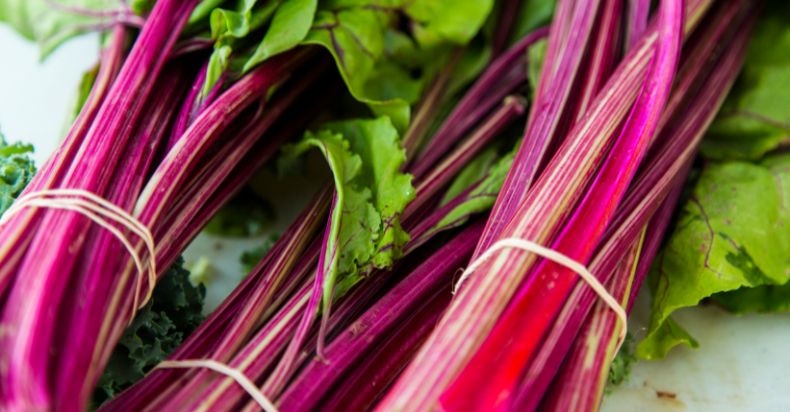Oxalates, or oxalic acid, are naturally occurring compounds found in a variety of plant-based foods. While they are not harmful in small amounts, excessive intake of oxalates can lead to the formation of kidney stones and other health issues.
This is because oxalates can bind to calcium in the body, forming crystals that can accumulate in the kidneys.
Therefore, it is important to monitor oxalate intake, especially for individuals who are prone to kidney stones or have been advised to follow an oxalate diet.
Is Rhubarb High in Oxalates?
Rhubarb is indeed high in oxalates, with a 100-gram serving of rhubarb stalks containing about 500 milligrams of oxalates. Therefore, it is advisable for individuals following an oxalate diet to limit their consumption of rhubarb or opt for other low-oxalate fruits and vegetables.
The Oxalate Diet
The oxalate diet is a dietary plan designed to limit the intake of oxalates. It is often recommended for individuals who have a history of kidney stones or are at risk of developing them.
The diet involves consuming low-oxalate foods while avoiding or limiting high-oxalate foods.
Following an oxalate diet can help prevent the formation of kidney stones and reduce the risk of other oxalate-related health issues.
Rhubarb and Its Nutritional Benefits

Rhubarb is a perennial plant with a tart taste and is often used in desserts and jams.
It is a good source of vitamin C, vitamin K, calcium, and dietary fiber.
Rhubarb also contains antioxidants, which can help fight free radicals and reduce oxidative stress.
However, despite its many health benefits, rhubarb is also known to be high in oxalates.
Oxalate Content in Rhubarb
Rhubarb is indeed high in oxalates. A 100-gram serving of rhubarb stalks contains about 500 milligrams of oxalates.
This is significantly higher than the oxalate content in most other fruits and vegetables.
For example, the same serving size of strawberries contains only about 50 milligrams of oxalates.
Therefore, if you are following an oxalate diet, it is advisable to limit your consumption of rhubarb or opt for other low-oxalate fruits and vegetables.
Managing oxalate intake is crucial for individuals following an oxalate diet.
Here are some tips for reducing oxalate intake:
- Be aware of the oxalate content in the foods you consume.
- Cook high-oxalate foods, like rhubarb, to reduce their oxalate content.
- Consume calcium-rich foods along with high-oxalate foods to reduce oxalate absorption.
- Drink plenty of water throughout the day to help flush out oxalates from the body.
Conclusion
Rhubarb is high in oxalates, and its consumption should be limited or avoided by individuals following an oxalate diet.
While rhubarb offers many health benefits, it is important to consider its oxalate content and manage oxalate intake accordingly.
By being aware of the oxalate content in foods and following a balanced diet, it is possible to enjoy a variety of nutritious foods while minimizing the risk of kidney stones and other oxalate-related health issues.
